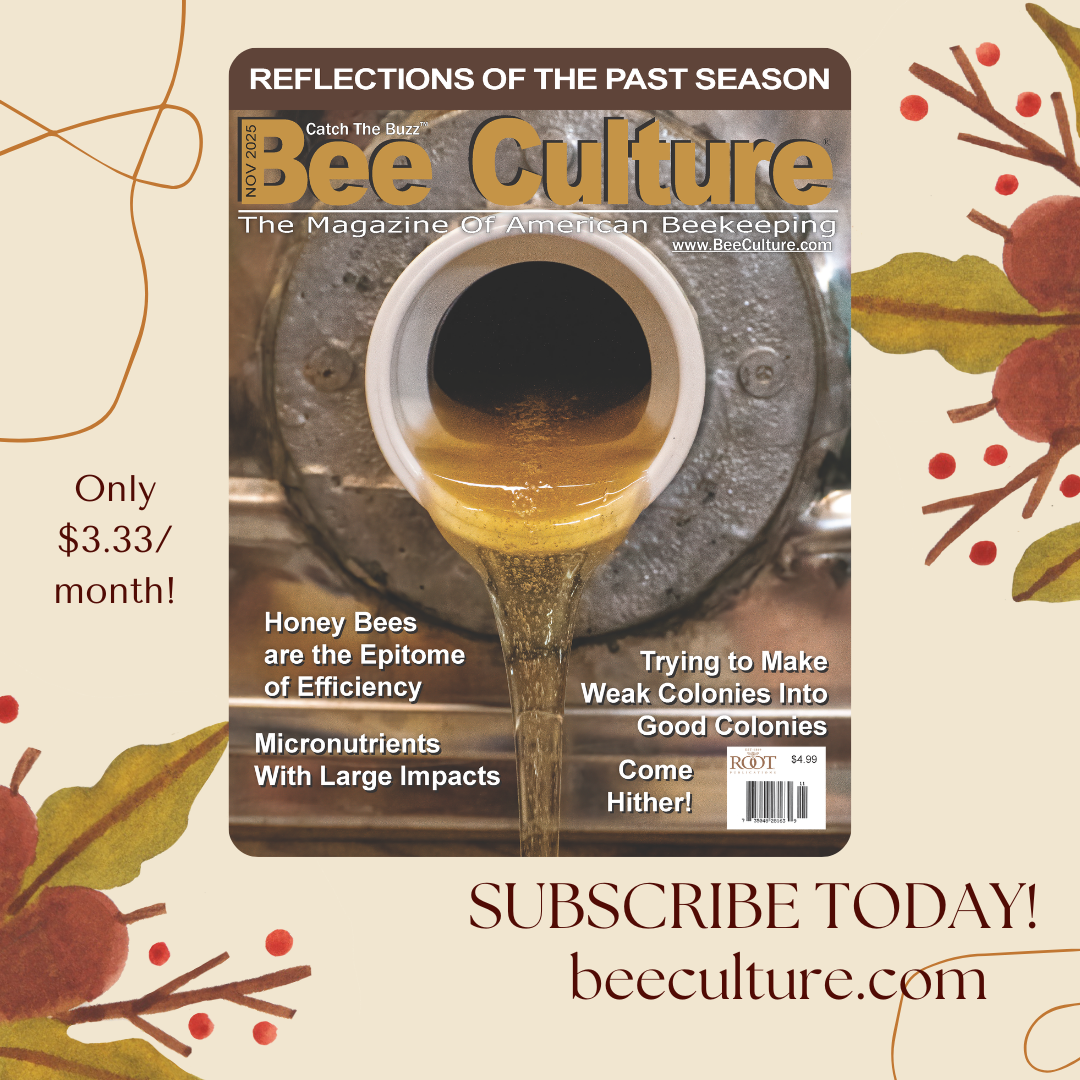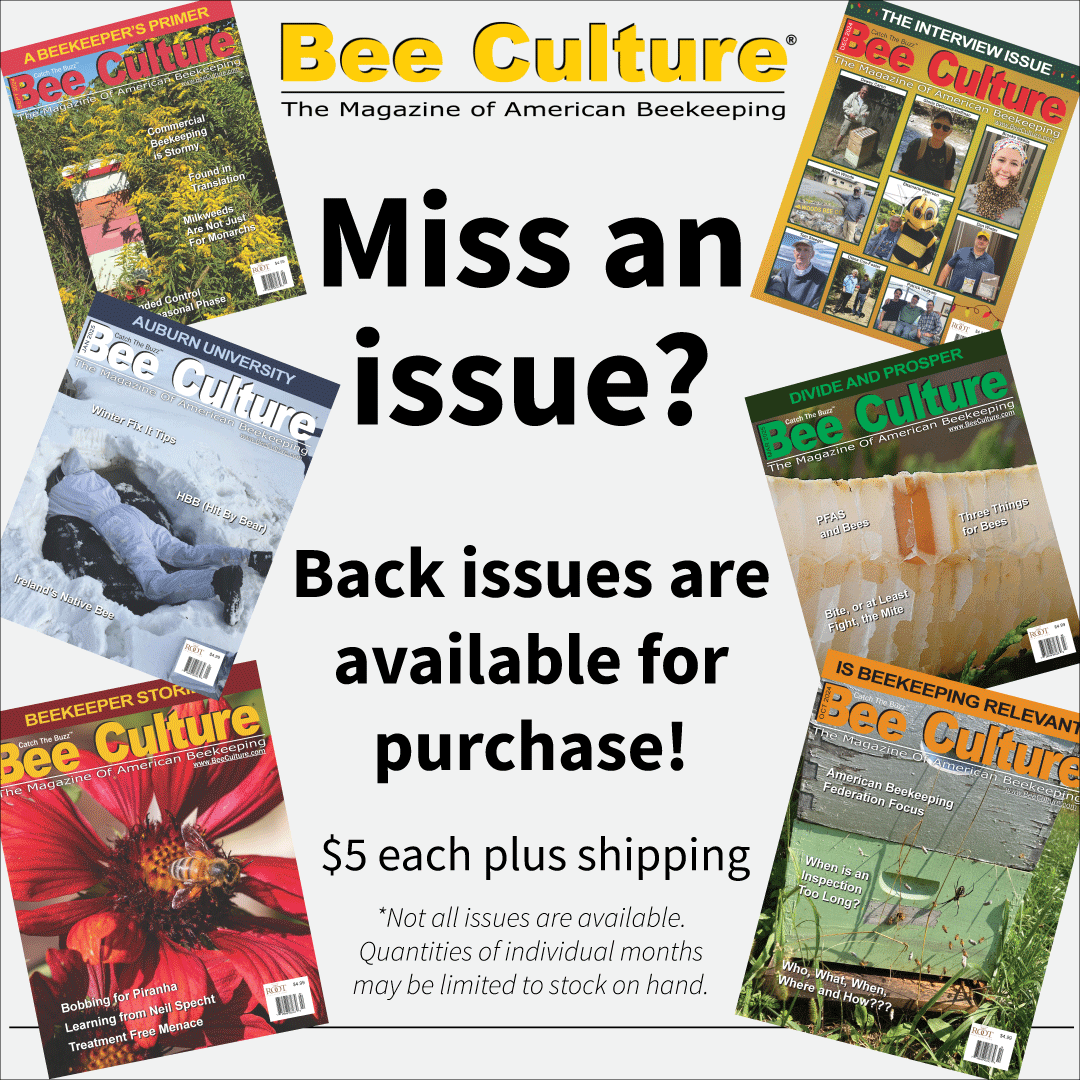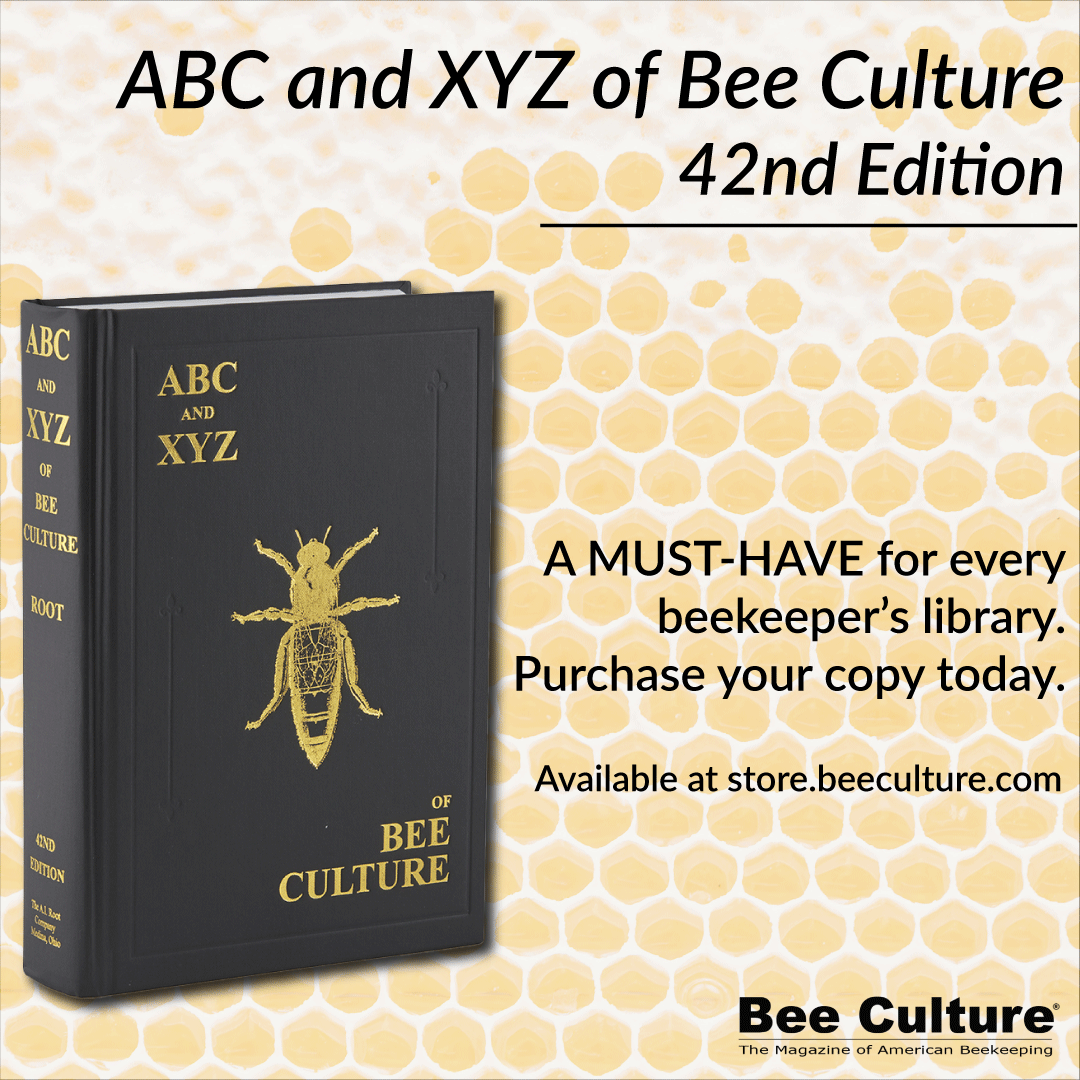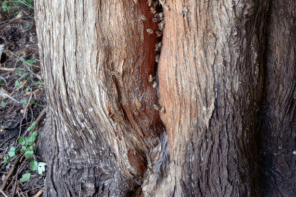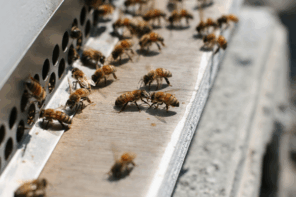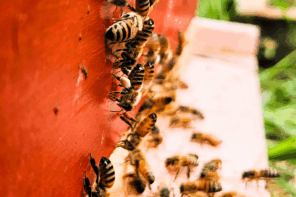No Accounting For Taste
Ed Colby
I thought I’d been bee-stung about everywhere a man can get stung. Then one sweltering day this Summer I took off my shirt to dip it in a bucket of water. Suddenly I dropped me to my knees and howled. The tip of your nose is the worst, but that nipple sting came close.
I deeply offended a friend with a story I included in my recently published anthology of adventures and misadventures – A Beekeeper’s Life – Tales from the Bottom Board. I know I can be a bull in a china shop, but I try to call it like I see it. Not everyone appreciates such candor, however. Unlike me, some folks are private by nature and eschew the bright lights. When I dropped off a copy of the book at my friend’s house, I told him I regretted that I hadn’t consulted with him first, but that the cow was out of the barn. I said I hoped he liked the story nonetheless. I thought he might. But when he called a couple of days later, he wasn’t pleased. I told him I’d do what I could. He’s a friend!
This poor epistle is not yet on the New York Times bestseller list. It’s published on demand, mainly from Amazon sales, so there’s no warehouse full of printed copies. I contacted my publisher in England, who said it would be easy to substitute another story.
At my age, you’d think I’d have learned all that a life chockfull of mistakes can teach. But no. I keep putting my hand on life’s hot stove. Words can cut like a razor. I knew that before. Now I really know it.
It’s mid-August as I write, and it’s been a decent honey year in west-central Colorado, so far. Around here, it’s generally all wrapped up by Labor Day. I regularly monitor Varroa mite numbers in my colonies, but that’s a challenge when I have to take off honey supers to get to the brood nest to run a mite test. I try to test at least four hives every time I visit one of my yards. With a few notable exceptions, mite numbers have been reasonable, as in five or fewer mites in a 300-bee sugar shake sample. When I see more than two or three mites in a sample, I treat the hive with either Formic Pro (formic acid) or Hopguard (hops treatment). My mite numbers are generally down when I re-test three or four weeks later. Not zero mites, but hey, I’ll settle for progress, not perfection. Keep in mind that these are colonies that had relatively low mite infestations in the first place.
Mite infestations spike in the Fall, as bee populations dwindle, while mites continue to breed. I try to keep the infestation level at 10 or fewer mites per sample prior to the first of December. By then my queens have generally stopped laying, and the brood is largely hatched out, leaving the mites exposed. Now I can reduce my mite load to virtually nil by dribbling oxalic acid. I like to do this on a warm day, but in a pinch, I’ll quick-dribble any day the temperature is above freezing. Since I started doing this early winter treatment, my bees have overwintered exceptionally well.
Prior to that late November or early December treatment, my strategy for 70 colonies is to treat only the colonies that really need it. That means a lot of mite sampling! This gets easier once I get the honey off, and no honey supers gives me more treatment options.
My gal Marilyn likes to barter. She just paid a medical bill with honey. It was the doc’s idea. She needed a doctor. He wanted honey. She traded goods for services.
Marilyn sells at three farmers’ markets a week and swaps honey for vegetables, succulent Palisade peaches, and the locally roasted coffee we drink too much of. The little darling always surprises me with something.
I was going to buy some honey from Paul. He had some knapweed honey in the tank that he didn’t particularly recommend, but I said I’d taste it. I missed Derrick’s 7 a.m. call that the boys were about to drain the tank into barrels, but when I got to the honey house at 7:30, there was a dab of knapweed left in the tank. I kind of liked it! When I brought a little bit home for Marilyn to try, her eyes lit up. “Now that’s some honey I could sell!” she exclaimed.
There’s no accounting for taste. Marilyn likes to have two honey varieties for customers to sample. That way, they get all wrapped up in deciding which honey they prefer. Their decision isn’t whether to buy, but rather which variety. Two honey choices are better than three, because indecisive tasters can hold up a line of customers with cash in hand.
Jet-black honeydew honey comes not from nectar, but from the sweet secretions of aphids. I harvest honeydew honey occasionally, when aphids invade the oak brush. Honeydew honey is looked down upon by some and sometimes wholesaled at a discount as “baker’s honey.” Europeans call it “forest honey” and will pay extra for it. So will a lot of my customers. They ask for “the Aphid Spit” by name and look crestfallen when I tell them I don’t have any.
Marty works for Paul but has bees of his own, too. A few years back I bought some honey from Marty. Somebody on Paul’s crew told me it tasted lousy, but when I sampled it, I found it exceptional. It was a big hit at the farmers’ market, so Marilyn raised the price and sold out.
No Accounting For Taste
There’s just no accounting for taste.

